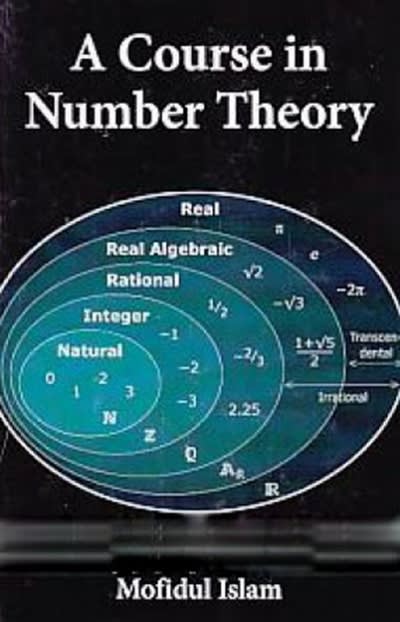Question
TRUE OR FALSE 1. 1-way ANOVA assumes that observations within each group are normally distributed. It is particularly sensitive to deviations from this assumption, and
TRUE OR FALSE
1. 1-way ANOVA assumes that observations within each group are normally distributed. It is particularly sensitive to deviations from this assumption, and there are no possibilities for adjustments.
2. For a paired t-test, if there are a moderate number of pairs, you could either visualize each individual value using a bar graph or visualize the mean differences.
3. 2-way ANOVA without replication and only two groupings may be analyzed using a paired t-test.
4. If you reject the null hypothesis that all the means are equal in a 1-way ANOVA, you can utilize a two-sample t-test for pairwise comparisons.
5. The two-sample t-test gets larger as the means gets closer, the variances get larger, or the sample sizes decreases.
6. When using two-sample t-test and you have a group with a small sample size but a disproportionately large standard deviation, it is most likely that you will encounter a false positive result.
7. The statistical null hypothesis for 1-way ANOVA is that the means of the measurement variable are the different for the different categories of data.
8. The null hypothesis of correlation/linear regression is that the slope of the best-fit line is equal to zero.
9. With paired t-test, the most common research design is that one grouping represents individual organisms, while the other is "before" and "after" some treatment.
10. There is no such thing as 3-way ANOVA or any other higher order ANOVAs with more groupings.
11. When a 1-way ANOVA has a balanced design, it is not very sensitive to different standard deviations in the different groups.
12. Paired t-test is the same as 2-way ANOVA without replication, where one grouping has paired values.
13. When reporting the results of a linear regression, most people just give the r2 and degrees of freedom, but there is a means to provide a significance value utilizing the t-distribution.
14. 2-way ANOVA, assumes normal data distribution equal standard deviations.
15. For two-sample t-test the most powerful research design will be to have an equal sample size in each group (N1/N2=1.0).
16. The null hypothesis for a paired t-test is that the mean difference between paired observations is one. When the mean difference is one, the arithmetic averages of the two groups must also be equal.
17. In 2-way ANOVA without replication, you calculate the mean square for each of the two main effects and calculate a total mean square by considering all of the observations as a single group.
18. In biology, the within-group variation is often largely the result of real, biological variation among individuals.
19. The two-sample t-test assumes heteroscedasticity.
20. In a regression study, you set the values of the confounding variable, and you control or randomize all of the possible independent variables.
21. In a 2-way ANOVA, when the interaction term is significant, it is advised to look at each factor separately, using a 1 way-ANOVA.
22. In a repeated measures ANOVA, one of main effects is usually uninteresting and the test of its null hypothesis may not be reported.
23. ANOVA depends on only one computation for degree of freedom to obtain the F- value.
24. Because of the paired design of the data, the null hypothesis of a paired t-test is usually expressed in terms of the mean difference.
25. If the data distribution is symmetrical, one-sample t-test can still be used with caution even if the data is not normally distributed.
26. To determine the appropriate minimum sample size for a one-sample t-test, you will need the effect size, or what we call the additive value between the observed and theoretical mean.
27. When ANOVA tests the null hypothesis the means are homogeneous, the among-group mean square and within-group mean square are both estimates of the within-group parametric variance.
28. Correlation finds the line that best fits the data points.
29. A 2-way ANOVA with replication tests only the null hypotheses that the means of observations grouped by one factor are the same.
30. Two-sample t-test is mathematically identical to a 1-way ANOVA on data with two groups.
Step by Step Solution
There are 3 Steps involved in it
Step: 1

Get Instant Access to Expert-Tailored Solutions
See step-by-step solutions with expert insights and AI powered tools for academic success
Step: 2

Step: 3

Ace Your Homework with AI
Get the answers you need in no time with our AI-driven, step-by-step assistance
Get Started


